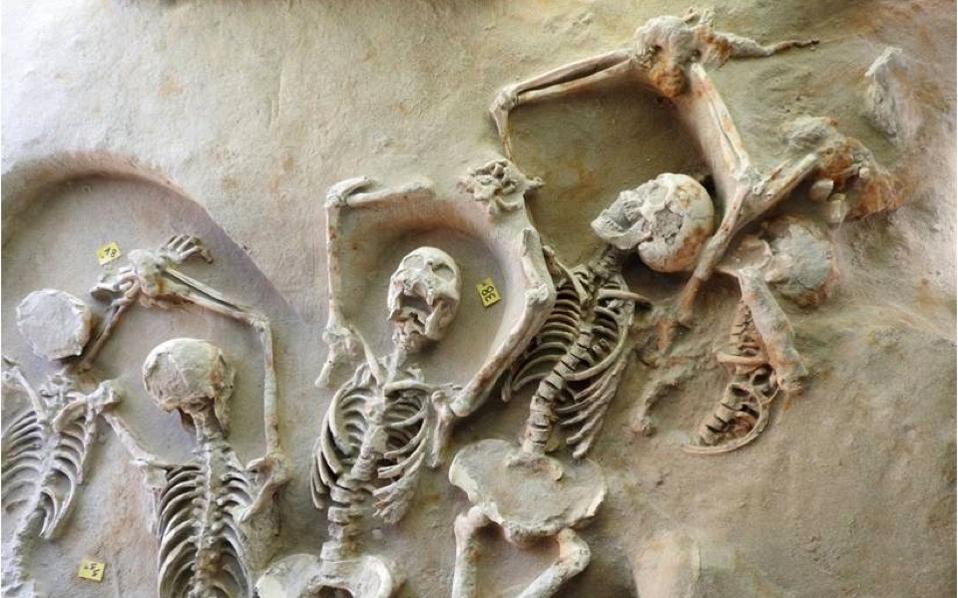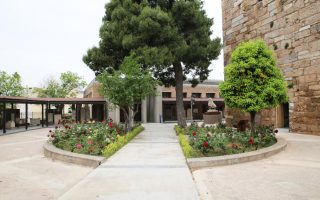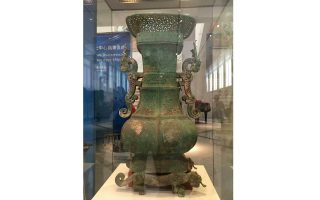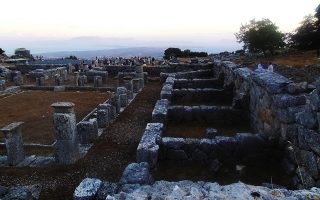American School of Classical Studies investigating deviant burials at Faliro

In sociology, deviant behavior can be either malum in se, meaning wrong in itself, or malum prohibita, wrong because it is prohibited. The term deviant is also used to define the mystery of an ancient necropolis unearthed at the Phaleron (present-day Faliro) Delta, where classical archaeology has called on the help of CSI-style archaeologists from the Malcolm H. Wiener Laboratory for Archaeological Science at the American School of Classical Studies in Athens (ASCSA) to examine groups of deviant graves, known by the scientists as the D graves, and mass burials of minors.
“This is our biggest and most important project,” says laboratory director and geoarchaeologist Dr Panagiotis Karkanas as he shows us around the new facilities created thanks to a donation by philhellene Malcolm H. Wiener.
The two-story building, inaugurated a few months ago, is equipped with seven state-of-the-art labs that augment the work of the applied archaeological sciences, such as bioarchaeology, zooarchaeology, geoarchaeology, paleobotany etc.
“We basically study the things that cannot be seen with the naked eye,” explains Karkanas.
In the lab’s basement, we see a researcher examining a mark on what looks to the layman like a regular rock.
“She is looking at traces on a stone tool, at the way its edge has been eroded to determine how the rock was used, for example to treat animal skins, to cut meat or wood, or something else,” says the lab director.
Like other finds, the ancient tool will next be examined under powerful microscopes for signs of surface damage, while the chemical composition of organic finds is analyzed with electronic x-ray microscopes. The scientists will closely examine plant imprints as well as soil samples that can reveal important information about the natural environment in ancient times.
“In regard to Faliro, we will also study the temporal changes in the environment of the necropolis so that we can learn why this spot was picked in the first place and why it was later abandoned,” says Karkanas. “Once we understand the environmental changes, the archaeologists will be better able to date the graves, as some of them do not contain any funerary gifts. The soil contains many small fossils that are indicative of the deposits in the area, yielding small pieces of trash that tell us what the people there were doing.
“I believe that there is huge potential for us to understand the people of that turbulent time in the history of ancient Athens. History is normally written by and for the elites and we have relatively few archival sources for the Archaic period compared with the subsequent years of ancient Athens. The other big cemetery, in Kerameikos, was excavated a decade ago and revealed ornate graves that we did not see in Faliro,” explains distinguished American archaeologist and professor Jane Buikstra, who is credited with creating the field of bioarchaeology.
Buikstra is working with the Wiener Laboratory in an effort to answer questions regarding the lifespan of the people in Archaic times, their geographical provenance, their overall state of health and diet, and what connection there may be between the two. The scientists will also, for example, be able to trace the DNA of pathogens to determine whether the deaths of the minors were due to a deadly contagious disease.
“Those who met with a violent death may have been foreigners or locals who were killed for political or legal reasons. We can learn where they came from and who they were connected to. There are also 350 children’s graves that allow us to learn about the lives of infants and children,” says Buikstra.
“In general, we can assess the state of health of the Phaleron people, their ailments and their lifespan,” adds the scientist.
“They had a hard life and I would like them to have a good end, to pay them the honor of telling their story. It is like something of a memorial,” says Eleanna Prevedorou, a bioarchaeologist and associate of Buikstra.
We met Prevedorou in an older part of the Malcolm H. Wiener Laboratory, a smaller space than the new facility, which seems even more cramped because of the big plastic boxes squeezed into every square meter and containing hundreds of skeletons and other finds from the necropolis.
The boxes made their way to the lab recently, in cooperation with the Ephorate of Antiquities of Western Attica, Piraeus and the Islands, which is responsible for the excavation. A map of the necropolis on the wall shows the location of all the finds made back in 2013.
“Here we see a group burial where the deceased had their hands tied behind their backs. We also have individuals wearing metal shackles and people buried face-down, something that is unusual in Greece and a practice that has very negative connotations. In other cultures, it is considered a sign of degradation, torture or punishment,” says Prevedorou of the D graves.
The operation of the Phaleron necropolis is believed to date to between 750 and 480 BC, during a period of intense social and political unrest. The official excavation of the site began in 1911, with the first unusual burials coming to light a few years later.
The excavations began in 2012 by the ephorate after construction work for the Stavros Niarchos Foundation Cultural Center revealed hundreds of new graves and more signs of violent death in a necropolis that is believed to have been intended for people of the lower social classes. The finds from those excavations were transferred to the ASCSA lab, while this is also the plan for the 80 bound skeletons discovered in 2016.
The excavation site will be protected with a shelter, though it is not certain whether additional efforts will be made to showcase the necropolis so that it can tell its story, as well as that of a turbulent period which led to the Athenian republic of the 5th century BC. Either way, the deviants of Phaleron and all the other individuals buried at the site will take their place in the annals of history.





